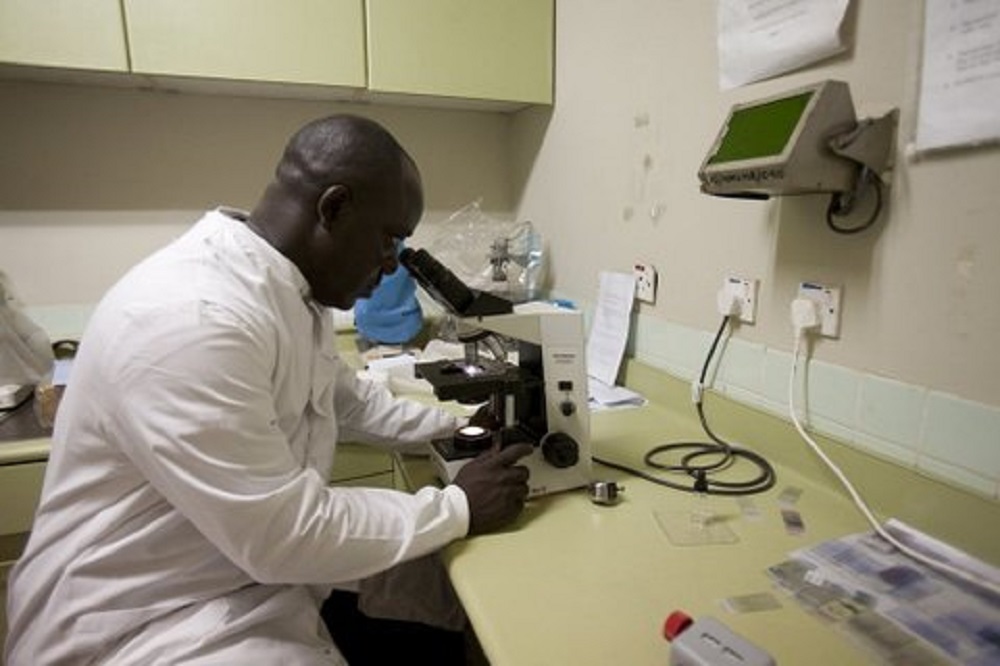Molecular Markers of Resistance in West Africa Study Group
Molecular Markers of Resistance in West Africa Study Group

This Study Group aims to bring together and explore the latest evidence on the prevalence of molecular markers associated with antimalarial drug resistance in West African Countries.
The study group was launched in April 2018 and is currently open to new members who have data that fits the inclusion criteria.
Resistance to all currently available antimalarials, including the pivotal artemisinins that have played a central role in the global decreases in malaria burden since 2000, has been confirmed in the Greater Mekong Sub-region of South East Asia. Over the past few years African therapeutic efficacy studies have shown declining artemether-lumefantrine efficacy, with treatment failure rates >10% reported in sites in Angola 1,2, Burkina Faso, the Gambia, Kenya, and Uganda 3,4. To prolong the efficacy of ACTs used in treatment, and drugs used during seasonal malaria chemoprevention (SMC), regular assessment and monitoring of parasite resistance is critical to generate useful information for formulating drug policy and management of drug resistance.
Mutations in Plasmodium falciparum (P.f) genes have long been established as markers of antimalarial resistance5–8, and the level of clinical failure has been associated with the presence of these resistance mutations at the population level9,10. Identification of both copy number variation (CNV) and single nucleotide polymorphisms (SNPs) in the P.f genes allows monitoring of the emergence and spread of resistant parasite populations11. This molecular surveillance can be used to track the impact of preventative measures such as Intermittent Preventive Therapy in pregnancy (IPTp) and Seasonal Malaria Chemoprevention (SMC), as well as to assess the appropriateness of current drug treatment policies.
There is a great deal of molecular marker data already collected, but much remains unpublished; there is also heterogeneity in reporting, meaning that it is very difficult to get an accurate picture of the existing evidence. The publication process is also long (from months to years) and delays the dissemination of information. Gathering the evidence together, standardising and transforming it into formats that are easily accessible, allows summary information to be available to policy makers.
The Study Group’s specific objectives are to:
- Collect and standardise the existing evidence on known genotypes associated with antimalarial drug resistance from published and unpublished sources;
- Develop a webpage within the WWARN website to share resources and evidence generated within the group (access may be limited to only those in the network);
- Build on relationships developed already through the WWARN West African Regional Centre to encourage data sharing for collective visualisation and trends analysis;
- Develop country and/or regional maps of the evidence collected, and if appropriate extend point maps to continuous heat maps with modelling support;
Subject to gaining funding, organise a workshop to: bring key researchers together, build trust and relationships, and undertake some training in data management and analysis.
- Primary data collection studies with marker prevalence or frequency results from baseline/pre-treatment samples.
- Genotype results for at least one pfcrt, pfmdr1, pfdhfr, pfdhps, or K13 genotype.
- Samples collected in one of the following countries; Senegal, Burkina Faso, Mali, Benin, Niger, Mauritania, Guinea, Nigeria, Togo.
- Location and year of sample collection.
After upload to the WWARN Data Repository, WWARN will standardise data sets according to the WWARN Molecular Surveyor methodology. The statistical analysis plan will be developed by the Group’s members prior to any analysis.
The Study Group comprises participating investigators who contribute relevant data sets to the pooled analysis. Data sets will remain the property of the investigator. The Study Group collectively makes decisions with respect to including additional studies, data analysis and plans for publication, in line with the WWARN Publication Policy. The Study Group will identify one or two people to coordinate activities including data analysis, and drafting of publications and reports for group review.
For further information, contact Magatte Ndiaye magatte.ndiaye@wwarn.org or Paul Sondo paul.sondo@wwarn.org.
1. Plucinski, M. M. et al. Efficacy of artemether-lumefantrine and dihydroartemisinin-piperaquine for treatment of uncomplicated malaria in children in Zaire and Uige provinces, Angola. Antimicrob. Agents Chemother. 59, 437–443 (2015).
2. Plucinski, M. M. et al. Efficacy of artemether–lumefantrine, artesunate–amodiaquine, and dihydroartemisinin–piperaquine for treatment of uncomplicated Plasmodium falciparum malaria in Angola, 2015. Malar. J. 16, 62 (2017).
3. WWARN. WWARN Explorer. (2018). Available at: http://www.wwarn.org/tracking-resistance/wwarn-explorer. (Accessed: 10th January 2018).
4. WHO. WHO Malaria Threats Map: tracking biological challenges to malaria control and elimination. (2018). Available at: http://apps.who.int/malaria/maps/threats/. (Accessed: 3rd January 2018).
5. Cowman, A. F. et al. Amino acid changes linked to pyrimethamine resistance in the dihydrofolate reductase-thymidylate synthase gene of Plasmodium falciparum. Genetics 85, 9109–9113 (1988).
6. Peterson, D. S., Walliker, D. & Wellems, T. E. Evidence that a point mutation in dihydrofolate reductase- thymidylate synthase confers resistance to pyrimethamine in falciparum malaria (Plasmodiumfakiparum/drug resistance/folic acid antagonists/genetic linkage analysis/polymerase chain reaction). Genet. Commun. by Georg. H. Hitch. 85, 9114–9118 (1988).
7. Price, R. N. et al. The pfmdr1 gene is associated with a multidrug-resistant phenotype in Plasmodium falciparum from the western border of Thailand. Antimicrob. Agents Chemother. 43, 2943–9 (1999).
8. Djimdé, A. et al. A Molecular Marker for Chloroquine-Resistant Falciparum Malaria. N. Engl. J. Med. 344, 257–263 (2001).
9. Humphreys, G. S. S. et al. Amodiaquine and artemether-lumefantrine select distinct alleles of the Plasmodium falciparum mdr1 gene in Tanzanian children treated for uncomplicated malaria. Antimicrob. Agents Chemother. 51, 991–7 (2007).
10. Venkatesan, M. et al. Polymorphisms in Plasmodium falciparum chloroquine resistance transporter and multidrug resistance 1 genes: parasite risk factors that affect treatment outcomes for P. falciparum malaria after artemether-lumefantrine and artesunate-amodiaquine. Am. J. Trop. Med. Hyg. 91, 833–43 (2014).
11. Djimdé, A., Doumbo, O. K., Steketee, R. W. & Plowe, C. V. Application of a molecular marker for surveillance of chloroquine-resistant falciparum malaria. Lancet 358, 890–1 (2001).

